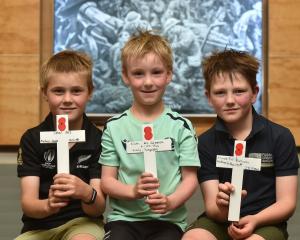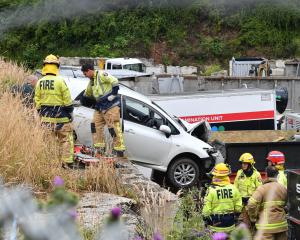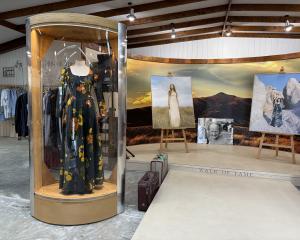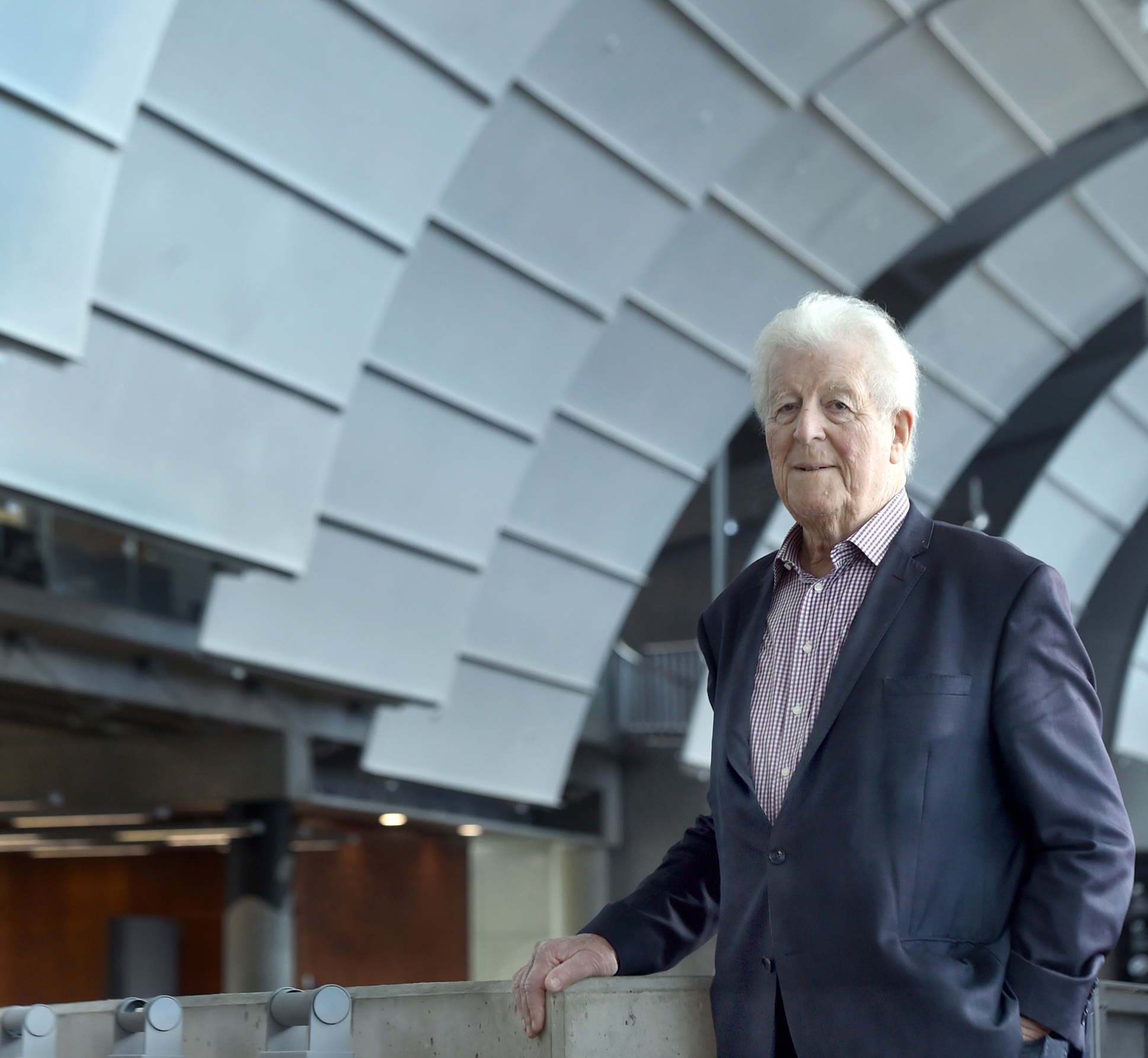
Built heritage has become a cherished feature of Dunedin and it had a determined advocate in Lou Robinson.
A seismic specialist, he was influential in preventing demolition of the Municipal Chambers and the main block of Otago Girls’ High School and was involved in the practicalities of developing the focal point of the University of Otago campus, the Information Services Building.
Mr Robinson offered a pragmatic voice when seismic strengthening was required to preserve heritage buildings and his expertise was called upon for city landmarks such as the court house, art gallery and Knox Church.
His reach extended to assessing Oamaru’s Victorian whitestone precinct, refurbishing the town’s police station and opera house, assessing First Church in Invercargill and working on national guidelines for the analysis and strengthening of unreinforced masonry buildings.
He was also an accomplished bowls player, a keen cyclist in his younger days and he enjoyed classical music.
He was married to Sandra Robinson for 54 years and was a father of two daughters, Genevieve and Miranda, and a son, the late Peter Boote.
Mr Robinson, 81, died on January 5 at Dunedin Hospital with his girls by his side, his funeral notice said.
Louis Mervyn Robinson was born to parents Jack and Colette in Invercargill on June 27, 1943. He was the third child of six.
He started school at Marist Primary in Invercargill and the family moved to Timaru when he was 8.
He attended St Patrick’s School there and, later, Marist Brothers Juniorate at Tuakau in northern Waikato.
He obtained work for the Utah-Williamson-Burnett consortium, based at the Manapōuri Power Station, Deep Cove.
This was to be the gateway for his career, craft and reputation, funeral celebrant Tania Bishop said.
Mr Robinson obtained a bachelor of engineering with first class honours from the University of Canterbury. Having gained a certificate in engineering, he went straight into the third year of a four-year degree.
He joined Dunedin structural engineer Jim Hadley in business in 1968, starting Hadley and Robinson.
Structural engineer and heritage developer Stephen Macknight said Mr Robinson strived to provide value for clients.
"He wanted to do things efficiently," Mr Macknight said.
"He wanted to try different things that hadn’t been done — make things interesting for himself by challenging himself.
"I feel he was quite the mentor to me, but also probably everyone who worked in the office."
Mr Macknight said he was a highly regarded engineer and "his work will live on".
As Mr Macknight explained in an Otago Daily Times article about Mr Robinson in 2023, sympathy for built heritage has not always abounded.
"In the late ’80s when buildings where being pulled down around the country, Lou was able to show developers that buildings such as the Westpac Building, on the corner of George and Frederick St, could be redeveloped in a financially viable way," he said.
"With the growing number of successful redevelopment projects at the time, developers and institutions, such as the Dunedin City Council and the university, looked at ways they could redevelop existing buildings, rather than demolish and build new.
"With efficient structural analysis and design, Lou was behind many of these successful projects."
Southern Heritage Trust chairwoman Jo Galer was quoted in the same piece and she pointed to a can-do attitude.
"He takes a practical yet safe approach to strengthening buildings," she said.
"Where others less qualified see dire structural problems, he sees what can be done to save it."
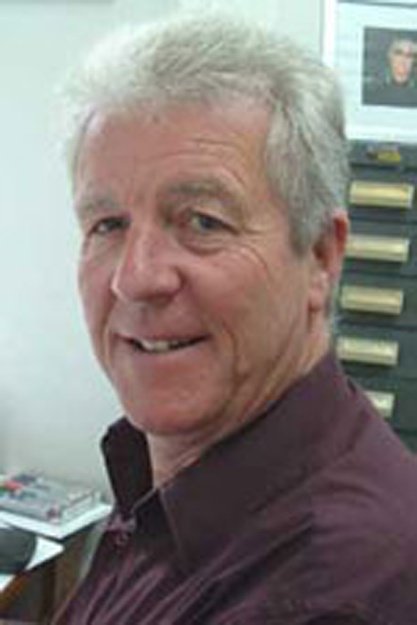
As well as a public outcry, city architect Robert Tongue and Mr Robinson were key, she said.
"I didn’t have the expertise that Robert Tongue and Lou Robinson had, but I relied terribly on them to carry the project through," she said.
"Anyway, so the clock tower was reinstated, as was the whole building.
"We won in the finish."
A backdown about pulling down the main block at Otago Girls’ High School was another win.
People had also wanted the city’s old gasworks to be pulled down and Mr Robinson helped prevent this, she said.
"He did some assessment of the chimney and various other bits around about and gave it a tick."
Mr Robinson was a recipient of Southern Heritage Trust David Cox Memorial Awards, as well as the Bluestone Award for outstanding contribution to heritage conservation projects.
A pivotal project at the University of Otago was a personal highlight for him. It was led by architects Hardy Holzman Pfeiffer, from the United States, and involved demolishing part of the central library, drastically remodelling the two-thirds that remained, renovating the exterior of nearby buildings and creating a glass-enclosed passage.
"They listened carefully to all suggestions made to solve each problem," Mr Robinson reflected in 2023.
"They wanted stairs that went up the whole three storeys with no vertical support, no props underneath. So we designed the hanging stairway, just supported off the floors."
The former library was seamlessly integrated into the new building, he said.
"When you walk through that building, you say: ‘This is magnificent. This is an educational space. I could learn here’."
Bishop Michael Dooley, of the Catholic Diocese of Dunedin, said Mr Robinson was a parent representative on the inaugural steering committee in 1986 for Kavanagh College, now called Trinity Catholic College.
Leith Bowling Club member Doug Fallow said Mr Robinson had treasurer and secretary responsibilities at the club right up until the week he died.
He also had many club titles to his name and was a regular pick in Dunedin representative teams.
Mr Robinson initially took up bowls with the Tainui club and joined the Leith club in 1990.
He was elected a life member there in 2007.
Keryn Davis was introduced at the funeral as "Lou’s pseudo-daughter", having been a boarder in the Robinson home as a teenager.
She described warm family dynamics.
"In the living room or over the kitchen table, I learned about social justice, how to laugh at yourself, and how to stand up for your views," she said.
"Rigorous debate was common, and Lou often saved his view to the end, cutting us all off at the knees with an alternative view, quietly shared but very firmly, always the engineer."
Miranda Robinson said her father had a love of science, critical thinking, pragmatism and beauty of the natural world.
"He was a lateral thinker and he fought for the underdog," she said.
"When Dad spoke, people listened."
Lou Robinson is survived by his wife and daughters.
His siblings were Maurice, Elizabeth, Wayne, Jennifer and Colette. He was also Grandpa Robbo to Freddy, Audrey and Fergus. — Grant Miller





